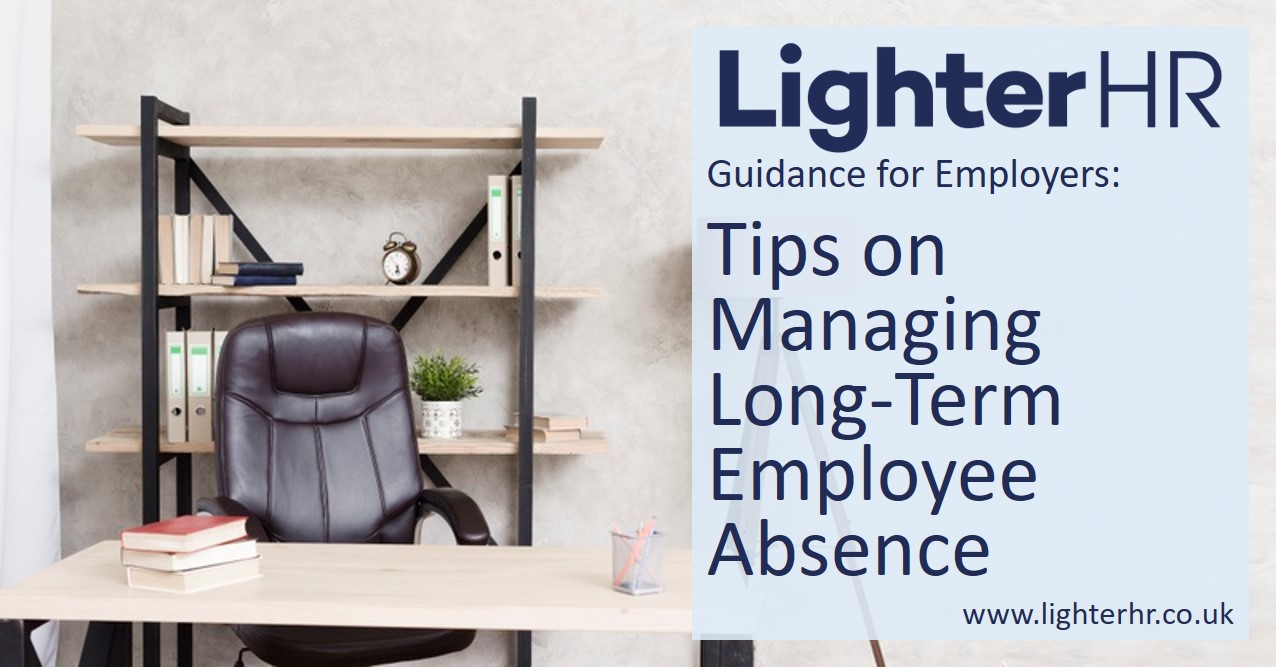Managing long-term employee absence can present a real challenge to all businesses but particularly to small and medium sized companies. There’s a need to move the business forward but this can be very difficult when you have a staff member on long-term sickness absence and you’ve no real insight into when or if they will be fit to return to work. Whilst the financial burden of long-term absence can be managed through insurance schemes and statutory sick pay, the practical issue of “who performs this work?” presents a far larger challenge.
1. Early Intervention in Potential Long-term Employee Absence Cases
Sickness absence is currently costing businesses and the government around £9billion in sick pay and other associated costs, and it has been proven that the longer an employee is off work the less likely they are to make a successful return.
In January 2013, the government announced a plan to introduce a new health advice service aimed at early intervention in potential long-term absence cases.
The service will be open to businesses of all sizes and will provide free assessment and advice to employees and employers in order to facilitate a return to work. The scheme will provide a free assessment when an employee has been absent for 4 weeks and will then provide advice on how the employee could be supported in a return to work.
This service should be of particular use to small and medium sized businesses who do not have in-house occupational services and whose only way of getting an independent view on an employee’s health is by engaging with a private GP and even they are reliant on the employee co-operating.
2. Tips on Managing Long-term Employee Absence
Whilst we wait to see how this scheme is implemented, here are some tips on managing long-term absence:
- Talk to the employee
- There are many sensitivities when it comes to managing long-term absence. As an employer you may feel ill-equipped to handle the matter sensitively and you may also want to make sure you don’t add additional pressure to an already difficult situation. However, maintaining open communication is a key part to managing a successful return to work. Try and keep the communication channels as open as possible.
- Take early action
- Seek the employee’s permission to get guidance and advice from their GP as early as possible. By building a relationship with the GP, you should feel that you are in possession of the facts that you need in order to both plan and support the employee.
- Be creative when it comes to return to work plans
- Letting employees know that there are different options when they return to work can be useful. Giving people an option to carry out a phased return, whereby they work part-time initially and then work back up to a normal work pattern, can make the return seem less overwhelming.
- Stay in touch
- Make sure the employee does not feel that they are not part of the business any more just because they are absent. This does need to be managed carefully as if one of the reasons for the absence is work induced stress then a constant chatter of communication could simply make the situation worse.
- Seek advice
- As soon as you start to feel that you could be facing a long-term absence situation get some advice. Ignoring the problem is not going to make it go away and the earlier you devise a plan the better. You can get support from an HR professional or ACAS should also be able to offer you guidance on the best steps to take.
Get In Touch

Speak with an HR Expert
Chat through your HR requirements with one of our expert consultants to understand the actions you can take and how we can help.


